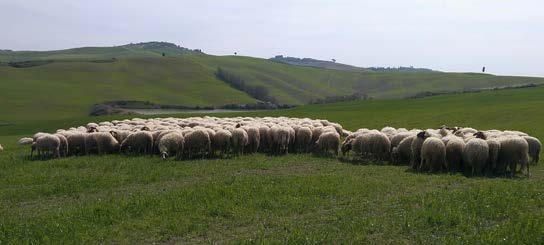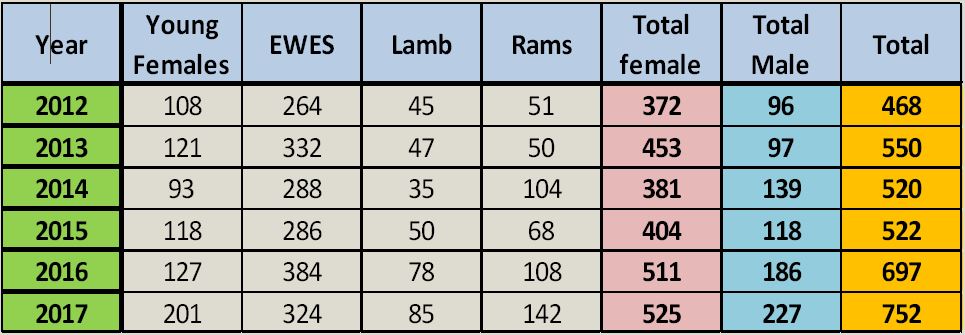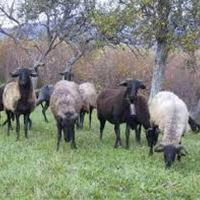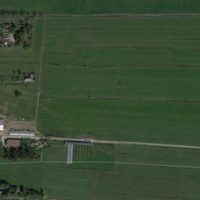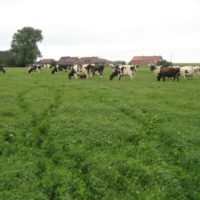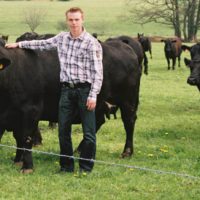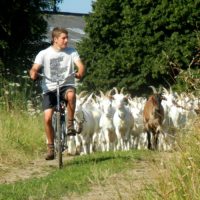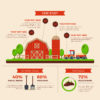Description
Background
Asciano farm is a dairy sheep farm located in Asciano (Italy) hosting a genetic center for dairy sheep selection. Selection objectives are targeted on single characters (milk production, protein milk content, reproduction attitude, etc.) but also on multiple characters and on interactions between environment and production.
Asciano is a reference farm for many breeders in Italy, both for improving the genetic level of their flock and buying top genetic rams and as a demo farm from where to get information on optimal nutrition, good management practice and animal welfare.
In the last decade, one of the main goals of this farm was optimizing the interactions between grassland use (especially grazing) and milk quality and yields. Particularly, it aimed at increasing quality of milk (e.g. its aptitude to be transformed in cheese), in terms of fatty acids, protein and CLAs contents, by exploiting the nutritional quality of grassland.
To achieve this goal, it is important to have a flock of grazing animals that could be able to maximize the use of grassland avoiding an over-consumption of pasture and its negative consequences.
Detailed description
Asciano Farm started to focus on the main requisite to achieve good results, namely to have a correct manage of grazing system and flock rotation nucleus, according to the biomass availability, to the season and to the number of heads per hectares.
Based on management decisions and forage species availability, farm’s grassland is divided in permanent (Lolium perenne, Trifolium pratense, Festuca arundinacea, Medicago sativa), used especially for hay production, green forage and also as a pasture, and temporary grassland (Avena sativa, Hordeum vulgare, Sorghum vulgare, Trifolium incarnatum, Hedysarum coronarium) destined to hay production, silage and grazing. The rangelands are both natural and cultivated, composed by a large biodiversity of grasses/legumes typical of center Italy.
To monitor grassland management and the quality of biomass, analysis on permanent and temporary grassland are periodically made, are analyzed: crude protein, D.M., ADF, NDF, net energy, total digestible nutrients, moisture, minerals.
In 2012 a new agronomic plan has been introduced to renovate part of grassland every year (every two years only for Hedysarum coronarium) in order to increase the annual production of Fodder Units and decrease the cost for off-farm forage purchase.
The replacement of old species with the new species and varieties has been considering their adaptability to the pedoclimatic conditions of soil of Asciano farm.
A forage of new introduction is Hedysarum coronarium, managed as monoculture, without chemical fertilization, capable to yield over 7 tons per hectare of forage and to be grazed after the first cut of the year.
Together with Hedysarum coronarium, Trifolium incarnatum has been introduced, sown annually, both grazed and for hay production. Trifolium incarnatum is a catch culture, it does not need irrigation and achieve value of fodder unit of 38/100 kg.
Both these legumes are cultivated applying the “minimum soil tillage” concept, reducing deep soil processing to conserve soil fertility and structure. Inoculation with rhizobium is applied to support germination, increase carbon fixation, and forage production.
To achieve good results, also quantitative productions of grasslands, which should remain as constant as possible over the years, are constantly monitored; this is one of the reasons why the temporary grassland surface has been increased and used with the cultures above described.
In Asciano are reared two Italian dairy sheep breeds: Massese and Comisana. The management is in semi-extensive system by loose housing and a daily grazing time depending on the season.
Grazing, especially on Hedysarum coronarium and Trifolium incarnatum, is managed through a rotational scheme.
The innovation on grassland management is coupled with an optimal interaction with grazing toward an optimal milk yields production, obtained also selecting animals for their ability also to exploit efficiently the pastures.
The genetic selection is achieved measuring both the daily animal performances in grazing and stable conditions standardized by the quality of forage/pastures. In this way grassland production is deeply related to genetic improvement since animals are selected for grazing efficiency and for the efficient conversion of fodder in milk quality.
Recording flock performances and forage analysis, also the grazing management year by year can be optimized, for example calibrating number of heads per paddock, the rest period, pasture areas etc.
Animal recorded traits are: daily milk kg, protein%, fat%, casein%, k-casein%, somatic cells, lactose%, unsaturated fatty acids, MUFA, PUFA. Even other parameters as BHB and urea are measured.
The animal performances are elaborated together with forage composition to understand relation between grazing time and increase of milk quality, and between milk quality and type of forage/grazing used.
Not less important is the forage composition that must be optimal to allow the animals to show their “performances value”. Thanks to the innovation in temporary grassland management, since 5 years the biomass composition is fairly constant, with a protein content of 14,5-15,5% for Hedysarum coronarium and 18-19% for Trifolium incarnatum.
Results
Through this innovative management criteria, the animals with higher ability to exploit grassland to increase the quality of the farm milk are selected. Genetic selection for milk production includes the adaptability of animals to semi-extensive rearing system, and this attitude has a sufficient hereditability to be transmitted to the population.
Top genetic rams and ewes are also sold generating a complementary income.
Practical results show that selected nucleus use grazing more efficiently, positively influencing the quality of milk, particularly in the protein content and the profile of unsaturated fatty acids. Thus, the described innovation not only leads to the improvement of grassland management and environmental sustainability, but also directly increase milk yields and quality.
Adoption criteria
To achieve an adequate level of the genetic progress in medium-term investment is required ensuring the support of specific expertise. Asciano farm has in fact an agronomist advisor expert in Mediterranean grassland management as well as a geneticist.
Future prospects
These criteria of innovation can be adopted by any farmer willing to invest in genetics, grassland management and farm specialization, namely to record animal performances and sow the grasses/legumes that best suit the farm soil.

